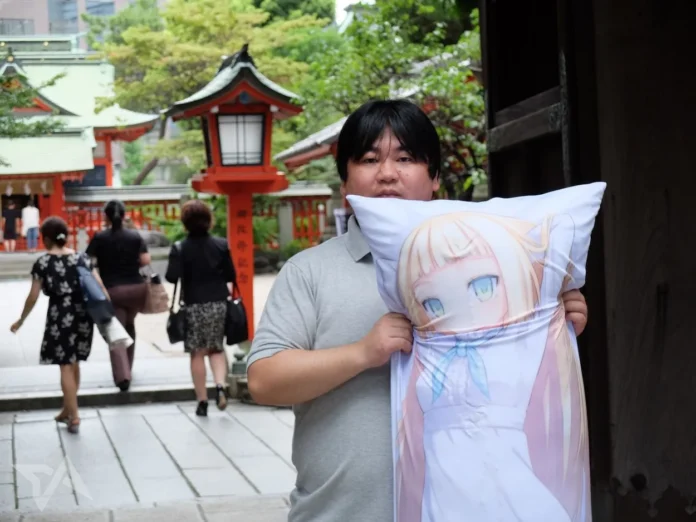Dakimakura, commonly known as body pillows, are more than just oversized pillows in Japan. They hold a unique place in Japanese culture, blending comfort, artistry, and fandom into a singular cultural phenomenon. This article delves into the origins, cultural significance, and modern interpretations of dakimakura in Japan.
Origins of Dakimakura
The term “dakimakura” combines “daki,” meaning “to embrace or hug,” and “makura,” meaning “pillow.” Traditionally, dakimakura were simple, large pillows designed for comfort and support during sleep. However, their evolution into a cultural icon began in the late 1990s with the rise of otaku culture.
Otaku culture, which encompasses enthusiasts of anime, manga, and video games, significantly influenced the transformation of dakimakura. The first character-themed dakimakura covers featured popular anime and manga characters, offering fans a tangible connection to their favorite fictional personas. This fusion of comfort and fandom quickly gained popularity, marking the beginning of dakimakura’s cultural journey.
Symbol of Comfort and Companionship
One of the primary cultural significances of dakimakura is the sense of comfort and companionship they provide. In a society where loneliness and stress are prevalent, dakimakura offer a form of emotional support. Hugging a dakimakura can create a sense of physical and emotional comfort, helping individuals cope with feelings of loneliness or anxiety.
The human-like size and shape of dakimakura allow for a more immersive experience compared to standard pillows. This is particularly significant in Japan, where physical displays of affection are less common in public. Dakimakura provide a private space for expressing affection and seeking solace, embodying a form of emotional intimacy that is culturally sensitive.
Artistic Expression and Customization
Dakimakura have become a canvas for artistic expression, showcasing intricate and vibrant designs. Artists and illustrators create detailed character artwork specifically for dakimakura covers, transforming them into collectible art pieces. These designs often feature beloved characters in various poses and outfits, adding a layer of personalization and uniqueness.
Customization is a significant aspect of dakimakura culture. Fans can order custom-made dakimakura covers featuring their favorite characters, complete with personalized designs and messages. This level of customization allows individuals to create a unique, personal connection with their dakimakura, further enhancing its significance as a cultural artifact.
Influence of Anime and Manga
The influence of anime and manga on dakimakura cannot be overstated. Popular series often release official dakimakura covers as part of their merchandise, driving the market and creating a strong association between dakimakura and otaku culture. For many fans, owning a dakimakura is a way to demonstrate their dedication and love for a particular series or character.
Conventions and events centered around anime and manga frequently feature dakimakura vendors, highlighting their importance within the fandom community. These events provide a space for fans to discover new designs, meet like-minded individuals, and celebrate their shared interests. As a result, dakimakura have become emblematic of the larger otaku culture, representing a convergence of art, fandom, and personal expression.
Modern Interpretations and Global Influence
In recent years, dakimakura have transcended their traditional and cultural roots to gain global recognition. The internet has played a crucial role in this expansion, allowing international fans to access and purchase dakimakura. As a result, what was once a niche cultural artifact has become a global phenomenon, embraced by diverse fandoms worldwide.
Modern interpretations of dakimakura extend beyond anime and manga characters. Some dakimakura covers now feature original characters, celebrities, or even pets, catering to a broader audience. This diversification has helped dakimakura maintain their relevance and appeal, adapting to the evolving tastes and preferences of a global market.
Cultural Reflection and Social Commentary
Dakimakura also serve as a reflection of social and cultural trends in Japan. They highlight the importance of personal space and comfort in a fast-paced, often stressful society. Additionally, the popularity of character-themed dakimakura underscores the significance of media and entertainment in contemporary Japanese culture.
Critics and scholars have also examined dakimakura from a sociological perspective, exploring themes of escapism, consumerism, and identity. For some, dakimakura represent a form of escapism, allowing individuals to retreat into a world of fantasy and imagination. Others view them as a symbol of the intricate relationship between consumers and media, where personal identity and cultural artifacts intersect.
Conclusion
The cultural significance of dakimakura in Japan is multifaceted, encompassing themes of comfort, companionship, artistic expression, and fandom. From their origins as simple body pillows to their current status as cultural icons, dakimakura have evolved to reflect the complexities of modern Japanese society. They provide a unique lens through which to explore themes of identity, media influence, and personal expression.
Whether as a source of comfort, a collectible art piece, or a symbol of fandom, dakimakura hold a special place in Japanese culture. Their enduring popularity and global influence underscore their significance, making them a fascinating subject for anyone interested in the intersections of culture, art, and society.



































